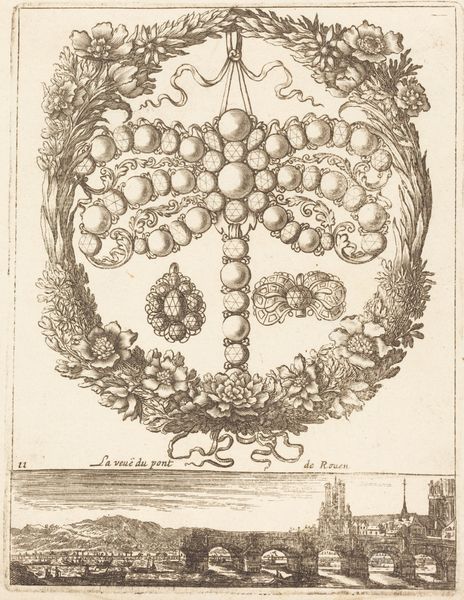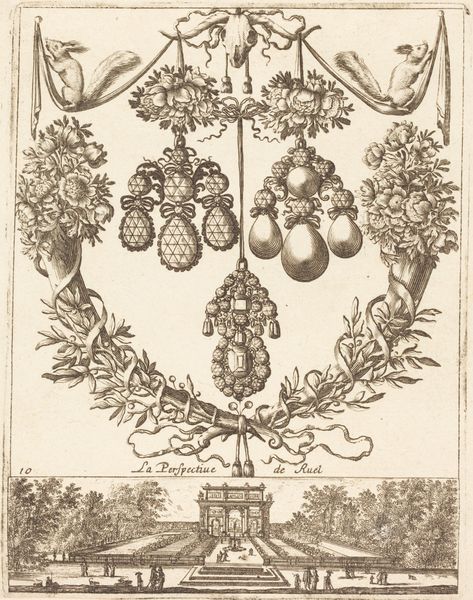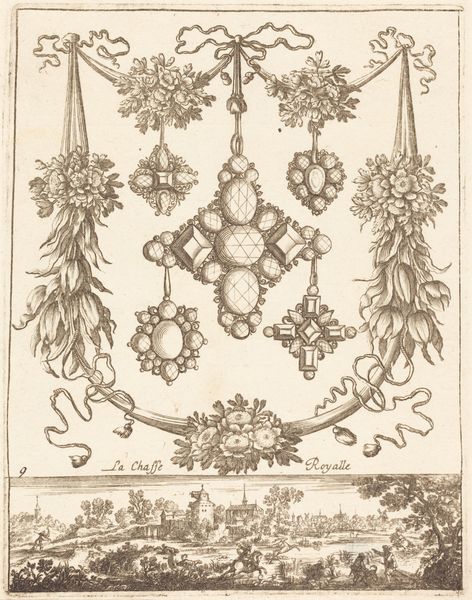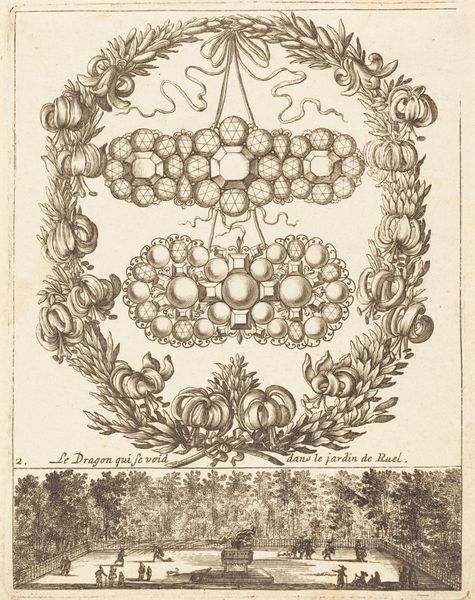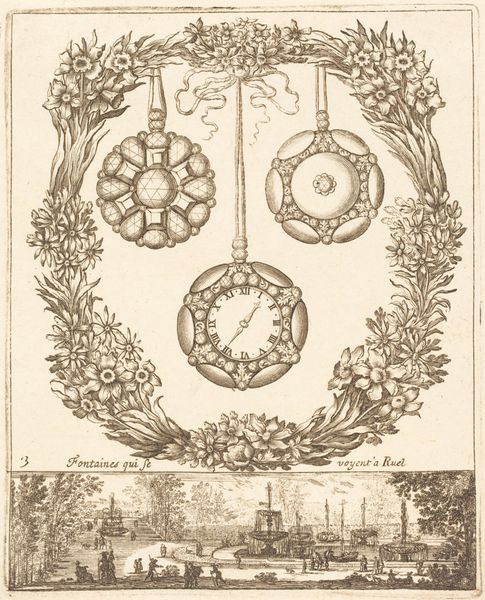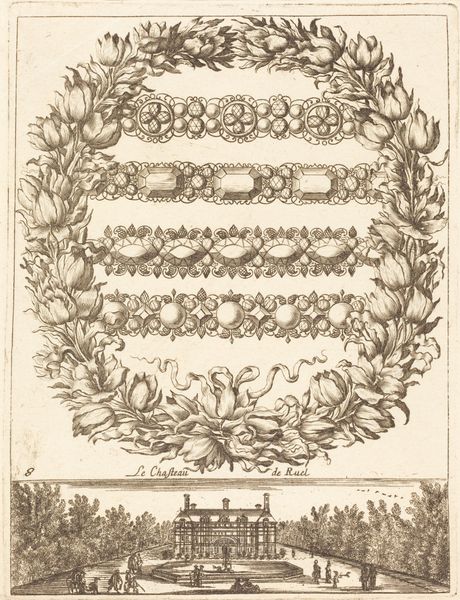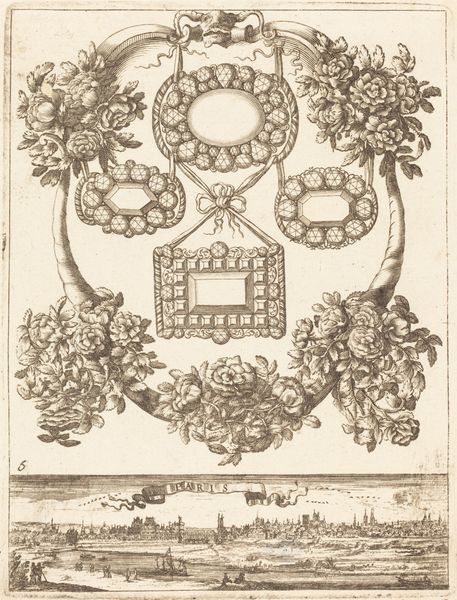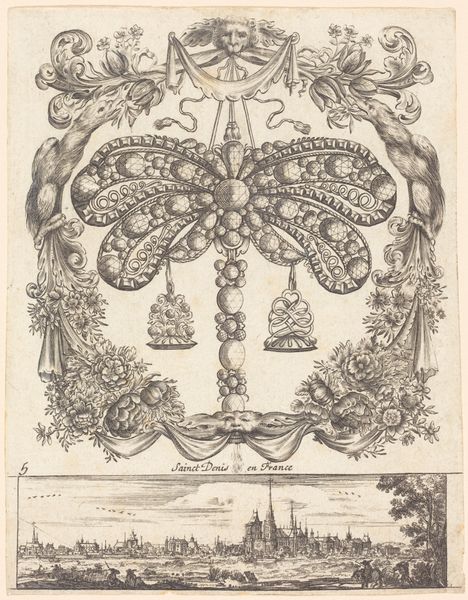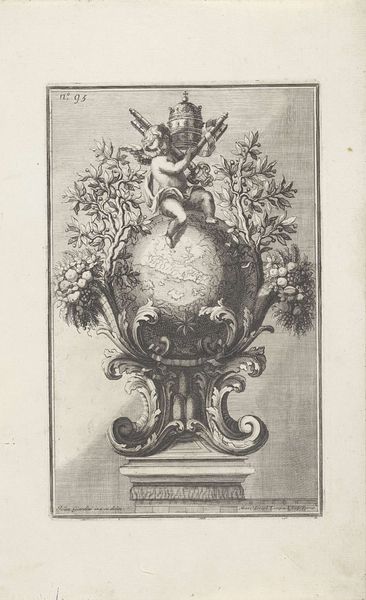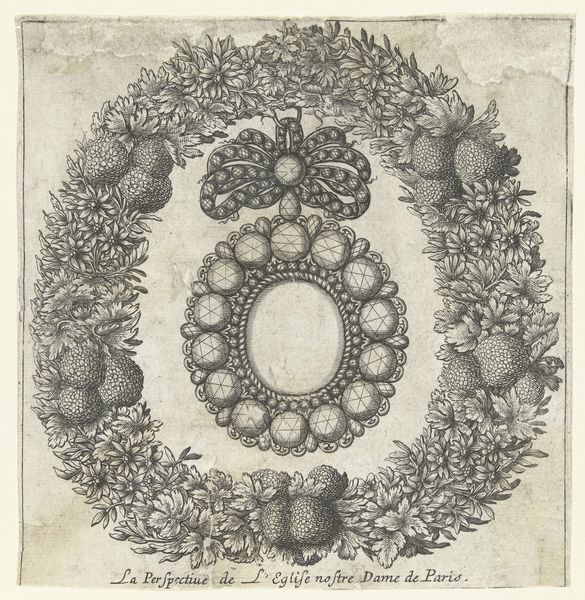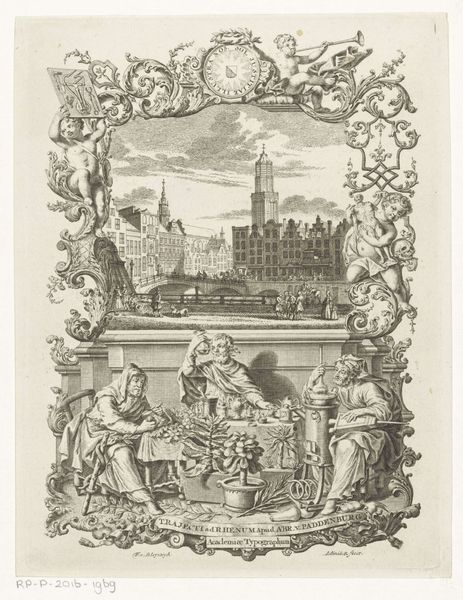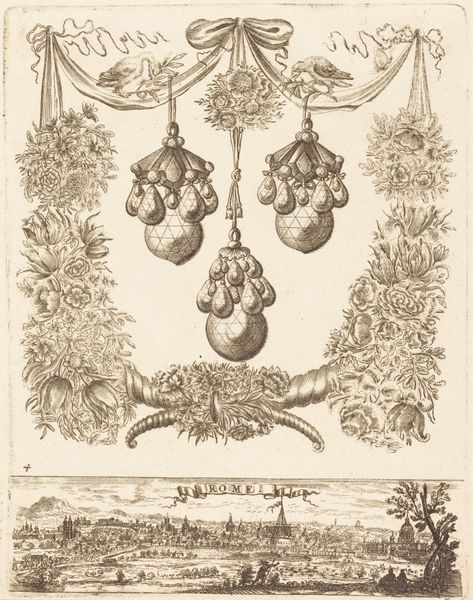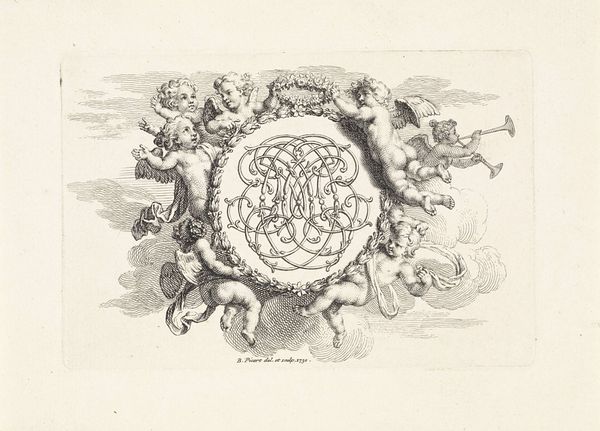
print, engraving
#
baroque
#
pen drawing
# print
#
line
#
cityscape
#
engraving
Copyright: National Gallery of Art: CC0 1.0
Curator: This piece is titled "La perspective de l'englise Nostre Dame de Paris," a print made by François Le Febvre around 1665. The method is engraving and print. Editor: The ornamentation at the top is… a bit much. My first impression is excess, or at least, very purposeful display. It’s such a contrast with the rather mundane depiction of the church. Curator: It is very indicative of the Baroque era, don’t you think? The use of such elaborate embellishments almost trivializes the scene it's framing. It seems to be making a comment about power and patronage more so than a true observation about architecture. Editor: Definitely. I’m also interested in the choice of engraving as the medium. It speaks to the mass production and dissemination of images, which was becoming more and more significant in shaping public perceptions of places like Notre Dame and those of prominence displayed above the scene. Curator: Precisely. The contrast highlights a fascinating tension. A building, a space of public worship and communal identity, reduced to a motif beneath aristocratic fanfare. But engraving also requires an incredible amount of manual labor and skill. How does the act of producing this artwork reflect society? Editor: Well, consider the role of the church at this point in time. It's still deeply entwined with royal power, its image carefully curated and distributed. I think about the skilled artisans working for months on this piece, etching lines that reinforce the power of both church and state, for probably very little return. Curator: It really underscores the role of art as propaganda, in a way. An engraving like this isn't just a cityscape; it's a declaration. A way to visually reinforce social hierarchies, and to tie the Church with symbols of royal might. Editor: Right. The garland of flowers feels like a celebratory offering, while the central portrait anchors the entire composition, reminding the viewer who really benefits from the grandeur of Notre Dame. Thanks for bringing that piece of work to my attention; I’d definitely passed it by, unexamined. Curator: My pleasure. Seeing Notre Dame through the lens of its material construction, it opens up broader questions about power, class, and representation at the time.
Comments
No comments
Be the first to comment and join the conversation on the ultimate creative platform.
